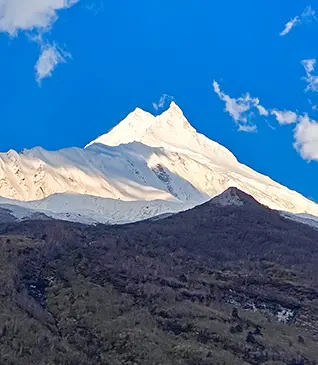Over the past decade, trekking has surged in popularity as an outdoor activity, attracting adventurers from all walks of life. The sense of accomplishment that comes with completing a challenging trail has made trekking a favored pursuit for many. This growing interest is reflected in the increasing number of trekking groups, specialized gear, and organized expeditions available to enthusiasts worldwide. However, with this rise in popularity comes a concerning trend, the number of accidents and mishaps on treks has also seen a significant uptick. Inexperienced trekkers often underestimate the challenges posed by harsh terrains, unpredictable weather, and the physical demands of the journey. Even seasoned trekkers can sometimes find themselves in precarious situations due to overconfidence or unforeseen circumstances. The reality is that the natural environment, while stunning, can be unforgiving, and the margin for error is often slim.
Given these risks, it is imperative to prioritize safety on treks, regardless of one’s experience level. For newcomers, understanding and preparing for the inherent dangers of trekking can mean the difference between a memorable adventure and a disastrous experience. For veteran trekkers, maintaining vigilance and adhering to safety protocols ensures that their passion for trekking remains a sustainable and enjoyable pursuit. As a responsible trekking company, we emphasize that safety should never be compromised and should always be at the forefront of any trekking endeavor.
Risks involved in trekking if you’re not prepared
.webp)
Trekking, while exhilarating and rewarding, comes with a variety of inherent risks that every adventurer must be aware of and prepared for. Understanding these risks is crucial for ensuring a safe and enjoyable experience.
Natural Hazards
One of the primary risks in trekking is the exposure to natural hazards. Trekkers often navigate through rugged and unpredictable terrains, which can include steep slopes, loose rocks, and slippery paths. These elements increase the likelihood of slips, trips, and falls, potentially leading to serious injuries. In remote areas, where medical help may be hours or even days away, such injuries can escalate into life-threatening situations.
Altitude Sickness (AMS)
Altitude sickness, or Acute Mountain Sickness (AMS), is another significant risk, especially on high-altitude treks. As trekkers ascend to higher elevations, the air becomes thinner, and the body struggles to acclimate to the reduced oxygen levels. Symptoms of AMS can range from mild headaches and dizziness to severe complications like High Altitude Pulmonary Edema (HAPE) and High Altitude Cerebral Edema (HACE). Without proper acclimatization and awareness of the symptoms, AMS can quickly become fatal.
Weather Changes
Weather in mountainous regions is notoriously unpredictable and can change rapidly. A sunny day can quickly turn into a storm with little warning, bringing heavy rains, snow, or extreme cold. Sudden weather changes can disorient trekkers, reduce visibility, and increase the risk of hypothermia and frostbite. Preparing for and understanding local weather patterns is essential, but even then, trekkers must be ready to face unexpected conditions.
Potential Consequences of Neglecting Safety Precautions
Failing to take safety precautions seriously can lead to dire consequences. In addition to the physical dangers posed by natural hazards, AMS, and sudden weather changes, there are other significant risks, including:
Dehydration and Heatstroke: Trekking often involves long hours of physical exertion. Without adequate hydration and proper pacing, trekkers can suffer from dehydration and heat-related illnesses.
Navigation Errors: Getting lost in unfamiliar terrain is a real risk. Without proper navigation tools and skills, trekkers can stray off the path, leading to prolonged exposure to the elements and increasing the risk of injury or getting lost.
Lack of Communication: In remote areas, communication can be challenging. Not having a reliable means to call for help in emergencies can exacerbate dangerous situations.
Common Safety Mistakes Trekkers Make
.webp)
While trekking is a thrilling and rewarding adventure, it requires careful planning and consideration of various safety aspects. Unfortunately, many trekkers, both novices and experienced, often make critical safety mistakes that can turn an enjoyable trek into a dangerous ordeal. Here are some common safety mistakes trekkers make and why it's essential to avoid them.
Inadequate Preparation
One of the most frequent mistakes trekkers make is inadequate preparation. Proper preparation involves thorough research about the trek, understanding the terrain, the climate, and potential hazards. Failing to prepare adequately can lead to:
- Getting Lost - Without a clear understanding of the trail, trekkers can easily stray off the path, especially in unfamiliar or poorly marked areas.
- Running Out of Supplies - Insufficient planning can result in a shortage of essential supplies such as food, water, and medical kits.
- Ignoring Weather Forecasts - Weather conditions in mountainous and remote areas can change rapidly. Ignoring weather forecasts or being unprepared for sudden changes can expose trekkers to extreme conditions, increasing the risk of hypothermia, frostbite, or heatstroke. It is crucial to check weather reports, always carrying gear for various weather conditions, including rain gear, thermal clothing, and sun protection.
- Underestimating the Difficulty of the Trek - Many trekkers underestimate the physical and mental demands of trekking. This can lead to overexertion & unrealistic expectations
- Not Learning About AMS and Its Symptoms
Altitude Sickness, or Acute Mountain Sickness (AMS), is a serious risk on high-altitude treks. Many trekkers are unaware of the symptoms and dangers of AMS, which include headaches, nausea, dizziness, and in severe cases, swelling of the brain or lungs. Ignoring the signs of AMS can lead to life-threatening conditions such as HAPE (High Altitude Pulmonary Edema) and HACE (High Altitude Cerebral Edema). Trekkers must educate themselves and learn about AMS, its symptoms, and prevention strategies. Acclimate Properly and allow time for the body to adjust to higher altitudes gradually.
- The Importance of Proper Gear and Equipment
Having the right gear and equipment is vital for a safe trekking experience. Common mistakes include inadequate clothing, insufficient footwear, and lack of safety equipment. Proper gear ensures comfort, safety, and readiness to handle unexpected situations.
Risks of Trekking Without Professional Guidance or a Support Team
Trekking without professional guidance or a support team increases the risk of accidents and mishaps. The presence of experienced guides and support teams offers:
- Local Knowledge: Guides are familiar with the terrain, weather patterns, and potential hazards, which can prevent accidents.
- Emergency Assistance: In case of injuries or emergencies, having a support team ensures immediate help and evacuation if necessary.
- Enhanced Safety: Professional guides often have first aid training and can help manage medical issues, including AMS.
Trekking alone or without adequate support can leave trekkers vulnerable and isolated in emergencies, making it crucial to seek professional guidance for a safer trekking experience.
The Role of a Trekking Company in Ensuring Safety
Professional Trekking Companies play a crucial role in ensuring the safety and well-being of their clients throughout the trekking journey. From the initial planning stages to the trek's conclusion, these companies implement a variety of measures to mitigate risks and handle emergencies effectively. Here’s an in-depth look at how trekking companies ensure safety:
- Comprehensive pre-trek briefings and preparation
Before embarking on a trek, professional trekking companies like Trek The Himalayas provide thorough briefings to prepare trekkers for the journey ahead. This includes:
→ Clear and comprehensive itineraries outing daily distances, altitude changes, and expected challenges.
→ Guidelines on how to handle various trekking situations, including environmental hazards and personal health issues.
→ Ensuring all trekkers have the necessary equipment and gear, and advising on proper usage.
- Importance of Experienced Guides and Support Staff
Experienced guides and support staff are the backbone of any safe trekking expedition. They bring invaluable expertise and skills to the table, including:
→ Familiarity with the trekking trails, including potential hazards, scenic spots, and emergency exits.
→ Proficiency in administering first aid and managing medical emergencies, such as altitude sickness or injuries.
→ Understanding of local weather patterns, flora and fauna, and cultural nuances, enhancing both safety and the overall trekking experience.
- Implementation of Safety Protocols and Emergency Procedures
Trekking companies adhere to stringent safety protocols and emergency procedures to handle any unforeseen situations. These include:
→ Routine inspections of equipment, campsites, and trekking routes to identify and address potential hazards.
→ Use of satellite phones, radios, or other reliable communication devices to stay connected, especially in remote areas.
→ Detailed evacuation plans in case of severe injuries or health issues, including coordination with local rescue teams and medical facilities.
- Health and Acclimatization Support
Managing health and acclimatization is critical, especially for high-altitude treks. Trekking companies provide:
→ Regular health checks to monitor symptoms of altitude sickness or other medical conditions.
→ Carefully planned itineraries that allow for gradual altitude gain, giving trekkers ample time to acclimatize.
→ Guidance on proper hydration and nutrition to maintain energy levels and overall health during the trek.
- Training and Certification
Professional trekking companies invest in continuous training and certification for their guides and support staff. This includes:
→ Training in advanced first aid and emergency response specific to wilderness environments.
→ Courses that enhance leadership skills and technical abilities in mountain trekking and rescue operations.
→ Education on sustainable trekking practices and environmental conservation to minimize the trek's ecological impact.
- Providing Reliable Equipment and Infrastructure
→ Provision of reliable and well-maintained trekking gear, such as tents, sleeping bags, and safety harnesses.
→ Secure and strategically placed campsites that offer protection from the elements and potential wildlife encounters.
→ Efficient transport and logistics arrangements to handle supplies, equipment, and emergency evacuations if necessary.
Choosing a guided trek with a professional trekking company ensures that you get the best out of your trekking experience while also being safe and secure.
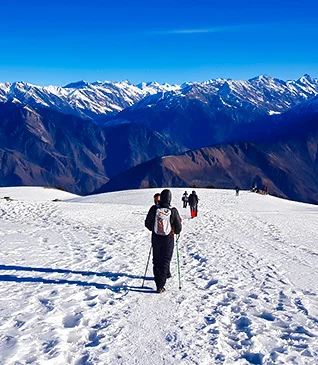
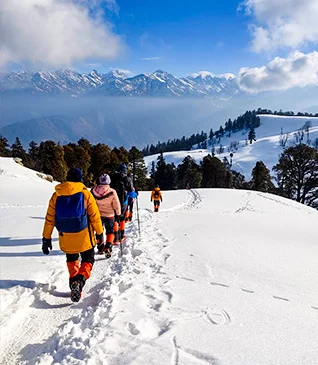
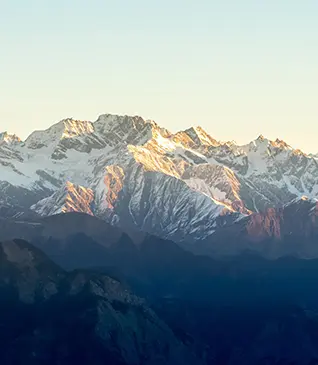
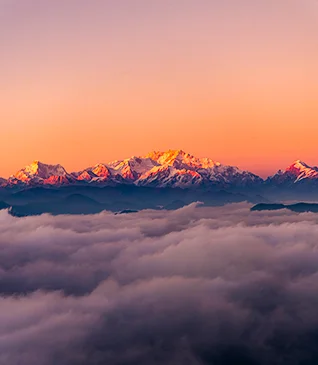
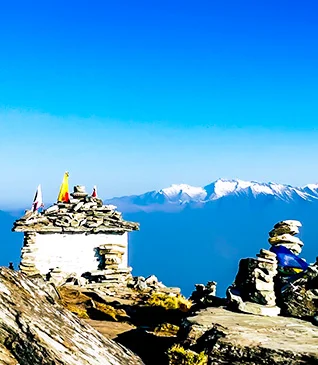
.webp)
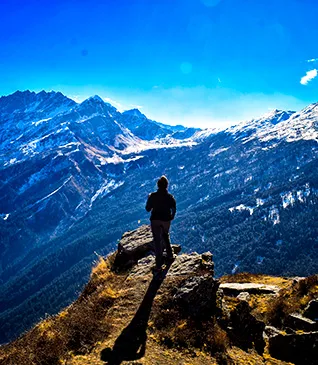
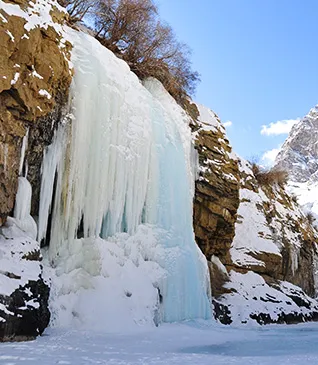
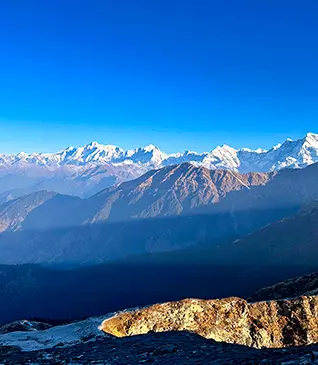
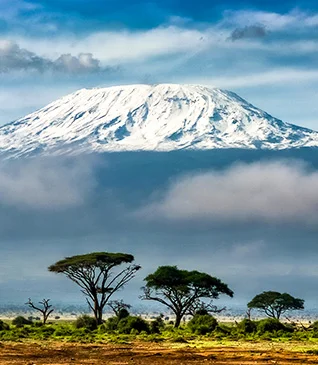
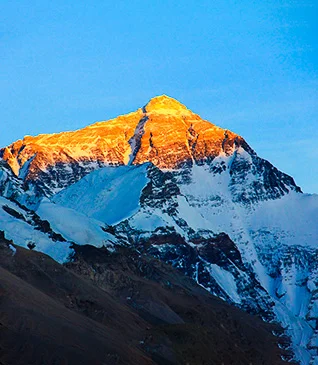
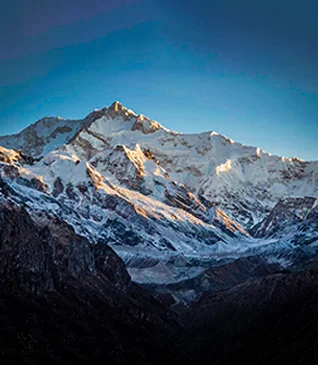
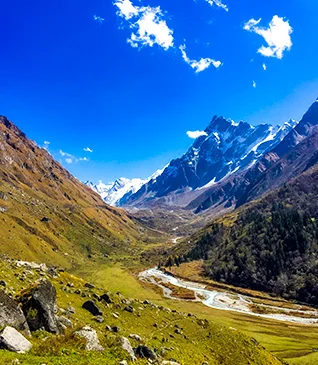
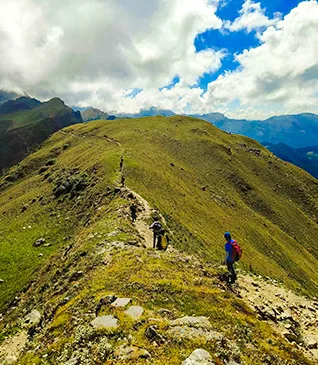
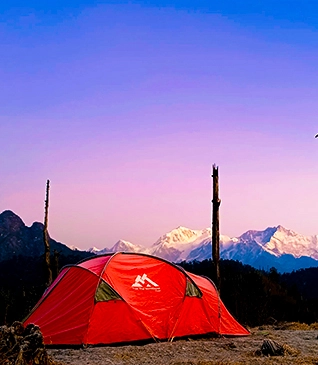

.webp)
